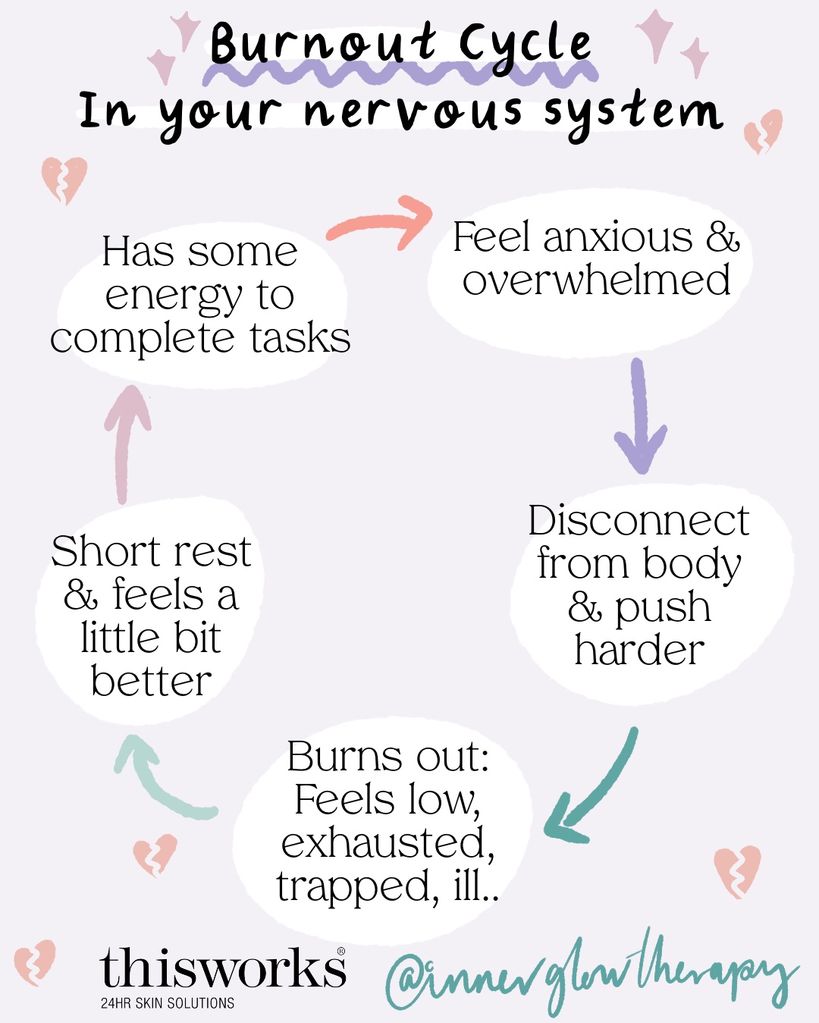Do you ever notice that when you finally get to take a break, you're physically and emotionally exhausted and feeling burnt out?
You're not alone. A recent report from Mental Health UK found that women are more susceptible to burnout than men, with 93% of the women interviewed sharing experiences of extreme stress.
The mental load
Our collective burnout is in part down to the mental load, defined as the cognitive effort involved in managing your home, relationship and family.
It’s the never-ending to-do list of considering what you're having for dinner, what's happening at the weekend and when your cat needs to go to the vets.
A great deal of cognitive effort goes into managing the competing demands of our lives, and the mental load also involves an emotional labour, that from a patriarchal perspective often falls on women as we are seen as the caregivers of the world.
We are expected to be the ones who listen, care for and comfort those in need, whether that’s an elderly parent, a friend or a colleague at work.
The problem with this? While caring for others can feel pleasant and bring in feel good vibes, when you are caring so much and for so long, you leave your own needs at the door.
This results in a disconnection from your inner world, which can dull down your mind and body connection. Extended periods of stress with a disconnection from your own needs, can take you to burnout.
RELATED: I had severe burnout – this is what helped me recover
Recognising burnout
There are three main ways to recognise burnout.
Emotional exhaustion: The fatigue that occurs when you have been shouldered with the lion’s share of the caring responsibilities. This looks like feeling flat, disconnected from yourself and drained.
Depersonalisation: A disconnect from your mind and body, and with it a disconnect from your emotions. As well as the depletion of empathy, care and compassion (to yourself and others).
Decreased sense of accomplishment: Not seeing the bigger picture of your accomplishments, it feels like no matter what you achieve, it doesn’t matter.
INSPIRATION: Burnout: How 5 days disconnected from the world changed my life
Overcoming burnout
Burnout doesn’t need to stay permanently, though. With the right tools, you can find ways to nurture yourself back to full health.
A key element of burnout is struggling with high amounts of stress over a long period of time. Therefore, in order to banish burnout and release stress, you must complete the stress response cycle instead of staying stuck in it.
When your body is charged full of stress hormones in your day, it’s important that you spend time releasing this pressure and stress.
How to overcome burnout
Movement
This is the most efficient way of completing the stress cycle. We know from research that movement is a powerful way of improving your mood and managing your emotions.
In fact, recent studies have found that for some people walking, yoga, running and strength training are even more effective than taking anti-depressants and just as effective as Cognitive Behavioural Therapy (a leading therapy offered in the NHS).
READ: How running l kept me afloat during depression
Use your breath
When you are stressed you take short, sharp breaths which increase levels of anxiety. Using your breath is one of the quickest ways to activate your parasympathetic nervous system (your rest and digest). Make sure to exhale longer than you inhale, as this is a quick way to signal relaxation to your body.
Cry
Crying is a key way to release stress, as you release oxytocin and endorphins. These neurochemicals support you to ease pain and boost emotional health.
DISCOVER: Is this the reason we're all so exhausted right now?
Prioritise your needs
This can feel challenging when you are often at the bottom of the list, but if you don’t, eventually your body and mind will make you prioritise you through ill health.
Consider your values and what is important to you, and aim to spend twenty minutes a day focused on these (e.g. going a walk, listening to a podcast)
Co-regulation
Nourishing your connections with your loved ones cues safety to a stressed-out nervous system. You get bonus points for a hug, as this brings in oxytocin, relaxing and lowering anxiety.
For more advice on managing burnout, join Lauren's four-week course: EmpowerHer, designed to support women struggling with burnout through evidence-based nervous system skills, boundary setting, getting to intimately know your needs and reconnecting to your inner wise women. Featuring exclusive This Works Deep Sleep collection worth £78. Begins 4th April. Details here.















